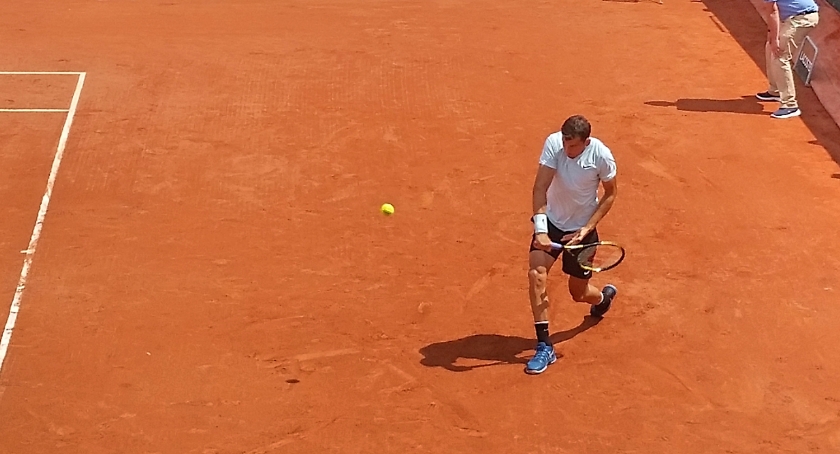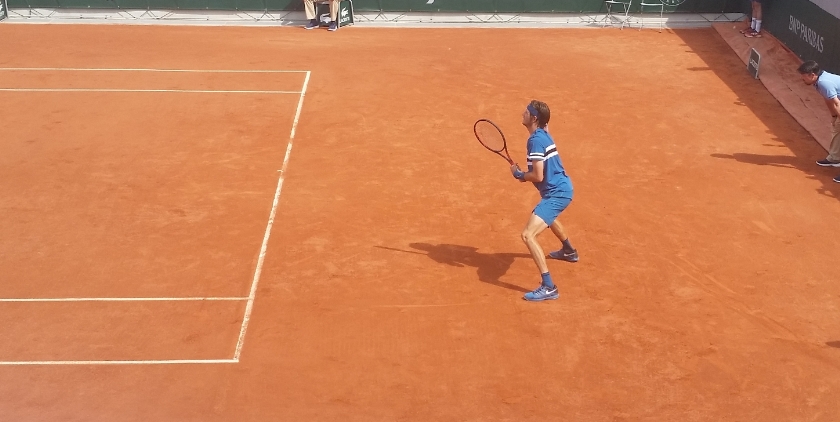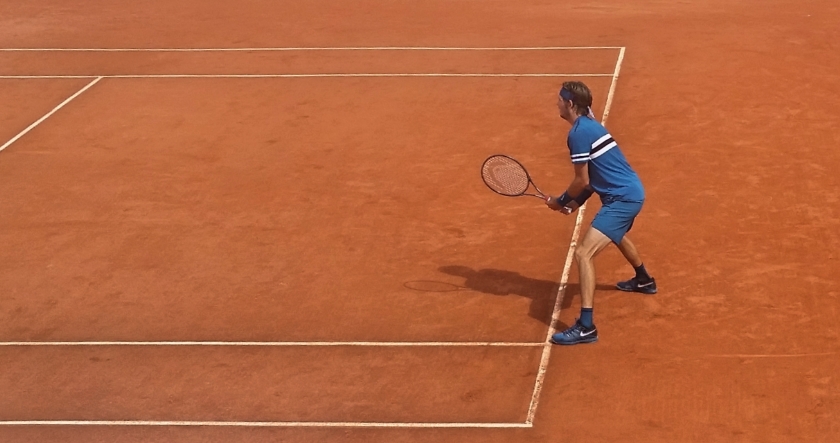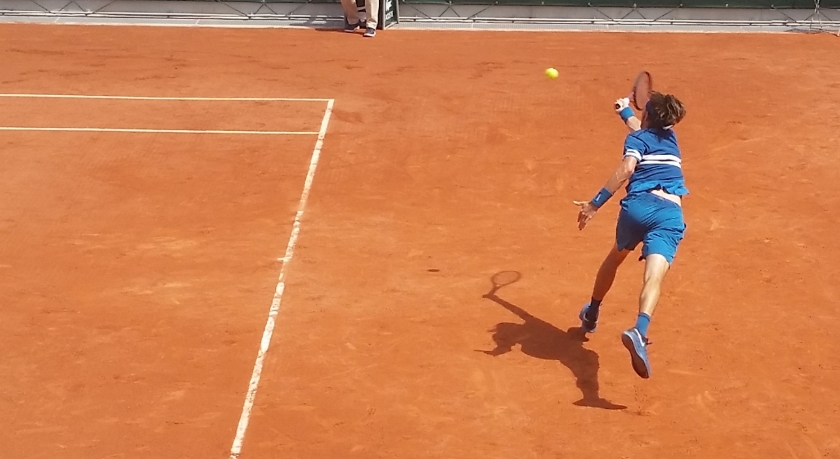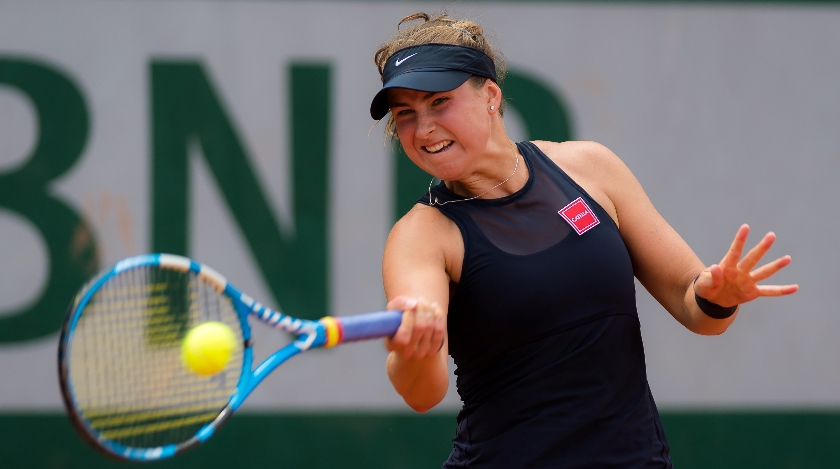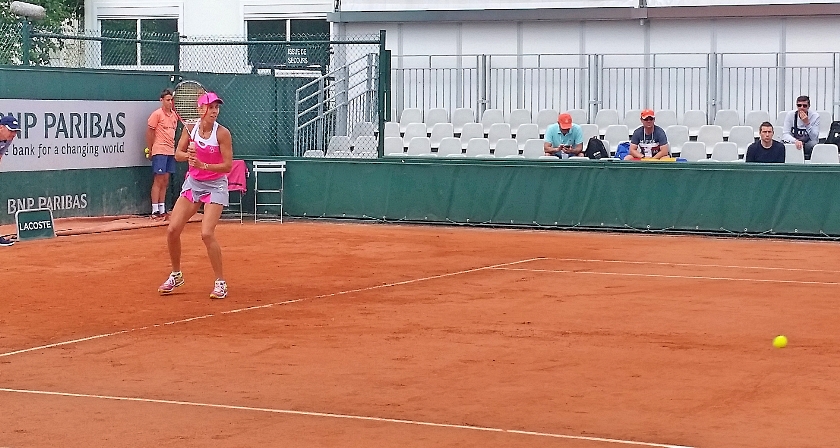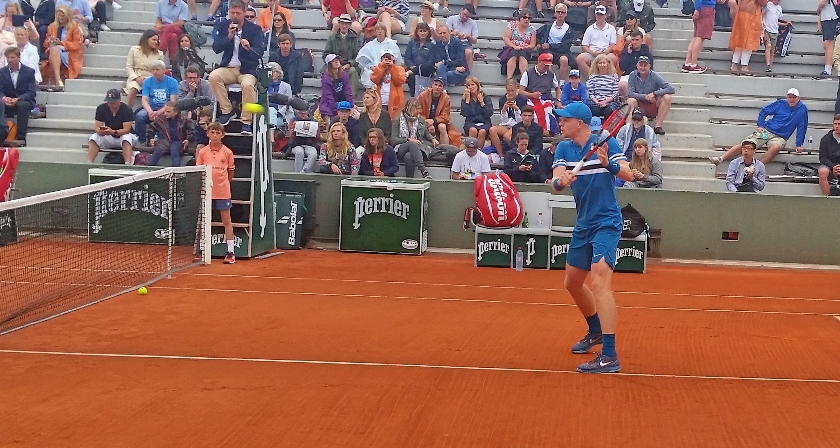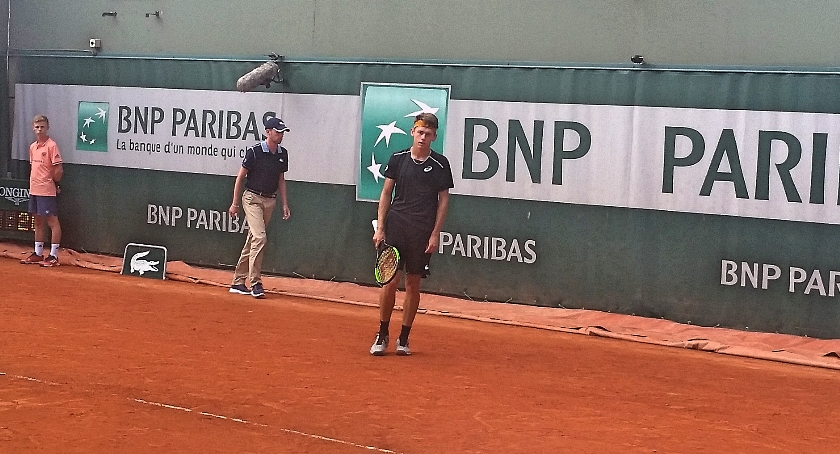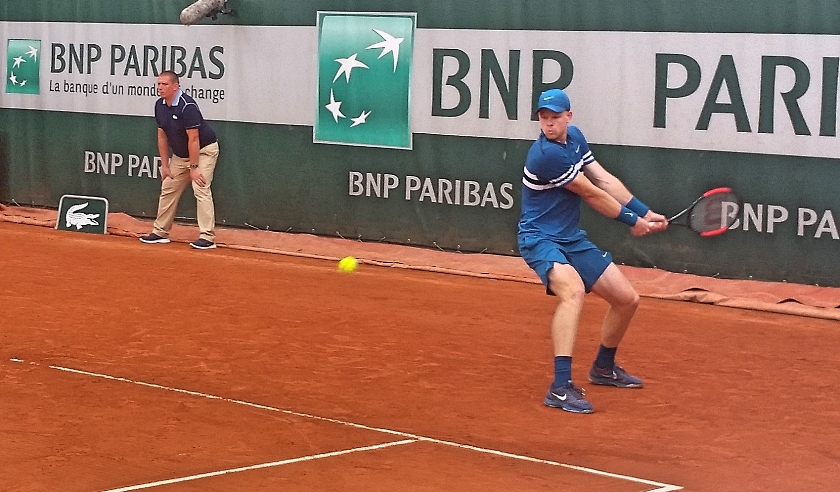I am sure that by the time the top seed Simona Halep entered the court to face the 16th-seeded Elise Mertens, on a cloudy day at Roland Garros, she had a game plan set in her mind, one that her and her coaching team agreed upon. Whether she could execute that plan to perfection or not mattered less, at the end of the day, than her putting a check mark in the win column.
Because for Halep fans, you see, playing an exquisite brand of tennis in the fourth round of a Major, while rewarding, is not a primary concern in the grander context of their player’s pursuit of the holy grail. And they may have a point. She has already reached the second week of a Major a number of times doing just that – playing high-quality tennis – and it did not necessarily translate into what seems to have become her career-defining goal over the last few years.
Halep wants to – needs to – win a Major.
I reckon that she would have taken the win against Mertens, no matter how she gets it, and not mind experiencing a one-match delay in producing her best tennis. It is rather in the next three matches that she will need to “put the package together,” so to speak, in order to achieve that which she craves and, in my opinion, deserves. More on that at the end.
She faced an opponent who has been in fine form over the last several months. Mertens, a high-IQ, player with a variety of strokes at her disposal, has amassed three WTA titles this year (Hobart, Lugano, Rabat) and reached the semifinal round of the Australian Open. She is also currently ranked no.16, a career high for the Belgian.
Although Halep defeated Mertens handily in Madrid (6-3 6-0) and halted her 13-match winning streak – including her two Fedcup wins –, it seemed overboard to expect a similar type of rout here.
Indeed, it started as if it would be tight match. The first four games featured long rallies, with both women moving each other around and looking for openings. Mertens held the first game, producing two winners, both stemming from well-hit first serves, allowing her to execute the 1-2 punch to perfection twice. Halep responded with an almost replica of that on her serve the next game, with a couple of 1-2 punch winning combinations of her own.
By the third game, both players were deeply focused on their tasks and rallies were tenacious. It turned out to be the key game of the match, one in which each player had chances to win the game, but the other kept on digging deep and coming back. There was one slight problem for Mertens. It was her service game and she double-faulted three times in it. The last one came on her fourth opportunity to hold. Halep won the next two points and closed the 18-point-long game.
Little did we know that Simona would never relinquish the lead for the rest of the match.
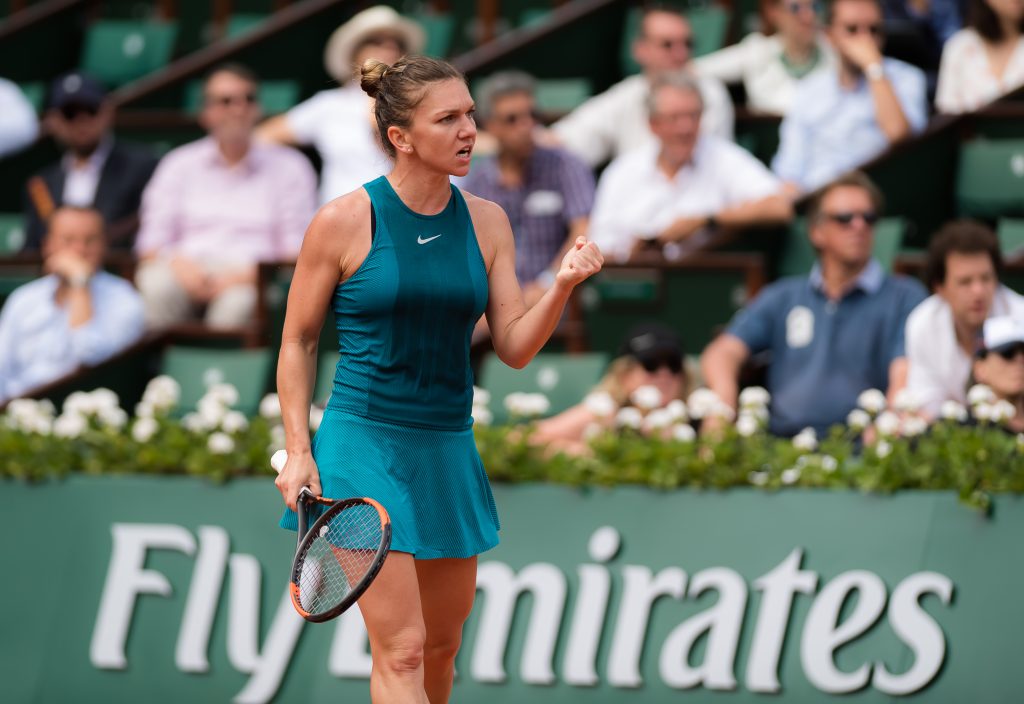
The world number one played a very aggressive brand of tennis, more than she has shown in the past. Apparently, that was deliberate. She said on her on-court interview after the 6-2 6-1 win that her goal was to be her “more aggressive,” but not necessarily in terms of winners, but of speed production in her shots.
She started hitting the ball hard from the beginning of the match and it did indeed work in her favor. It kept Mertens pinned behind the baseline, preoccupied with just getting ball back in the court. Naturally, that also meant that Simona herself, in return, made more errors. But that was understood and accepted. The intention was to keep Mertens so busy chasing balls that she could never got the luxury of calibrating her full arsenal of weapons.
The few times Elise did get the chance, Halep had the answers. She tried to sneak in some drop shots, Simona was quick with her first step. She tried to slice low, Simona stepped forward quickly, got under the ball, and accelerated on those, taking time away from her. She attempted to increase the pace of the rally, Simona counter-punched with interest.
Halep finished with more winners than Mertens but for a while in the first set, until she built a firm lead, she also committed more unforced errors than Mertens. The final score will not tell the tale of how contested the first twenty minutes of this match was. Halep, for her part, was very much aware of it:
“It was not that easy, like the score shows. All the games were tough. She’s a tough opponent. I had to pay attention of every ball we played.”
“Those four games at the beginning were really important, and after that I relax myself and I could play a little bit better.”
Play better, she did.
She put on a recital after those first twenty minutes, especially with her down-the-line accelerations on both sides. Leading 4-2, Halep broke her opponent’s serve for the second time when she hit an emphatic backhand cross-court winner at deuce and followed that up with a backhand down-the-line passing shot. Then, she shifted to a higher gear and cruised the rest of the way, making only four unforced errors until the end.
Mertens’s observations were no different: “She was too strong, too good for me. The first four games were more or less my level, but it was just these four games. Afterwards, I made a lot of mistakes. I wanted to be too aggressive. But she was everywhere. She served pretty well. That’s it.”
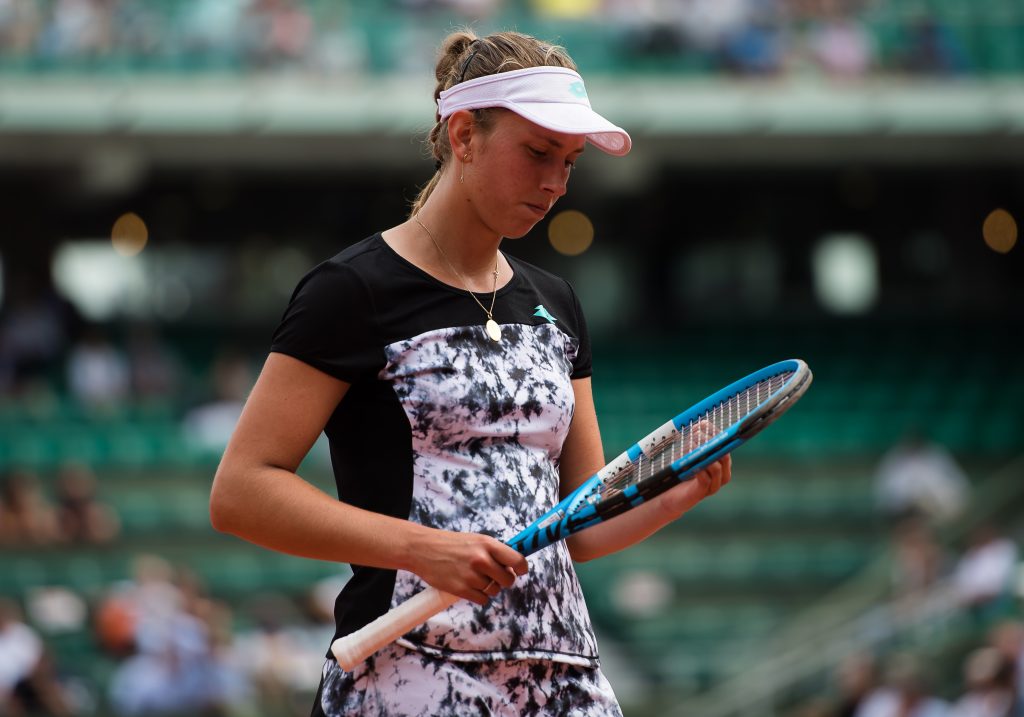
So, at the end of the day, Halep got her cake and ate it too. She got the win and performed at an extremely elevated level. The question still remains, can she “put the package together” for three more matches? Starting with the quarterfinal round, the dynamics will shift, and it will have a lot to do with the individual standing on the other side of the net.
On Wednesday, it will be Angelique Kerber. And against Angie, Simona cannot just take the win “no matter how she gets it” – yes, I quoted myself from above, I know, it’s despicable – because she will not get the win unless she produces high quality tennis. It will not stop there either. If she succeeds, she will need to do it again to conquer her semifinal opponent, and again, to get to the holy grail.
There are players who barely survive the early rounds, not playing particularly well, only to peak in the last couple of matches and win titles. There are also those who begin the tournament well and ride that confidence all the way to the title. And then, there are those who peak during a tournament, only to see their form take a nosedive in the semifinal or final rounds.
Halep fans can only hope that their player belongs to that middle group, because her performance today on the Philippe Chatrier court was nothing short of sublime.

